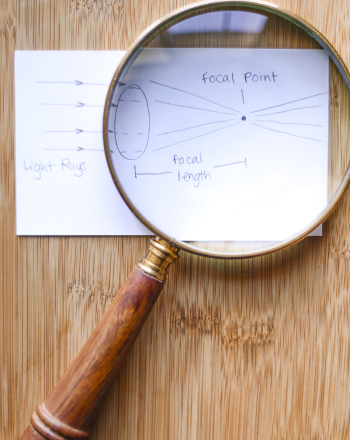Descripción

A lens is a clear object, usually made of glass or plastic, which is used to refract, or bend light. Lenses can concentrate light rays (bring them together) or spread them out. Common examples of lenses include camera lenses, telescope lenses, eyeglasses, and magnifying glasses. Lenses are often double lenses, meaning they have two curved sides. A convex lens is rounded outward, while a concave lens curves inward. (A great way to remember this is that a concave lens creates an indent like a cave!)The center axis through a lens is called the principal axis. On lenses that concentrate light rays, the point at which the rays meet, the focal point, is located on the principal axis. The distance the focal point is from the surface of a lens is called the focal length of a lens, and is important when determining the magnifying power of devices like magnifying glasses.Magnifying power is how much larger a given lens can make an image appear. This is a direct relationship between the focal length of the lens and the least distance of distinct vision, or LDDV. The LDDV is the closest your eyes can comfortably look at an object.
It is an educational content by education.com.
By clicking on the title of this resource, you will be redirected to the content. If you want to download the project, you just have to join the website, which now is for FREE.
Autores
Autor Erin Bjornsson
Categorias Ficha para imprimir, Experimento/Práctica, Física, 12-14 años, Science Fair - Education, Inglés add
Tag add
Data de publicação 27 / 08 / 2020
Licença Respeita a licença original do recurso.
Deseja fazer um comentário? Iniciar sessão





Comentários
mode_comment0